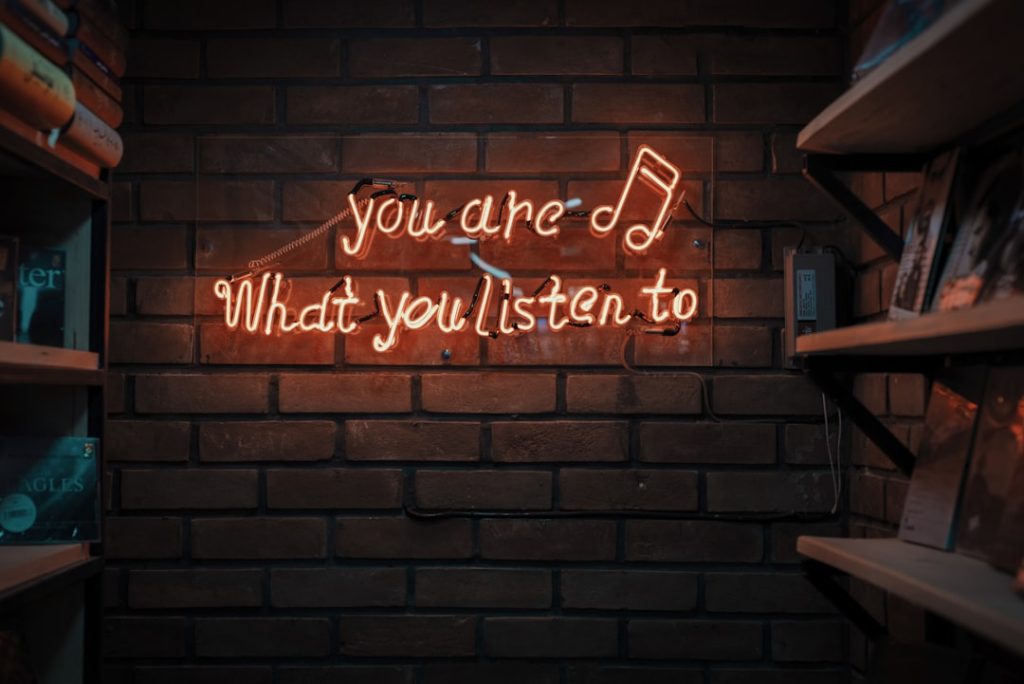
Listening comprehension is a fundamental skill that underpins effective communication in both personal and professional contexts. It involves not just hearing the words spoken but also understanding the meaning behind them, interpreting the speaker’s intent, and responding appropriately. This skill is crucial in various settings, from classrooms to boardrooms, as it allows individuals to engage meaningfully with others.
In educational environments, for instance, students who excel in listening comprehension are often better equipped to absorb information, participate in discussions, and perform well on assessments. They can follow complex instructions, grasp nuanced concepts, and engage critically with the material presented to them. Moreover, listening comprehension plays a vital role in fostering relationships.
When one person actively listens to another, it creates a space for open dialogue and trust. This is particularly important in conflict resolution, where misunderstandings can escalate tensions.
By demonstrating that they value the speaker’s perspective, listeners can de-escalate potential conflicts and promote a collaborative atmosphere. Thus, honing listening comprehension skills not only benefits individual learning and professional success but also enriches social interactions and community building.
Key Takeaways
- Listening comprehension is crucial for effective communication and understanding in any language.
- Active listening techniques, such as maintaining eye contact and asking clarifying questions, can improve comprehension.
- Improving vocabulary and language skills can enhance listening comprehension by making it easier to understand spoken words.
- Utilizing visual aids and context clues can provide additional support for understanding spoken language.
- Practicing note-taking and summarizing can help reinforce understanding and retention of spoken information.
Active Listening Techniques
Active listening is a dynamic process that requires engagement and participation from the listener. It goes beyond passive hearing; it involves fully concentrating on what is being said, understanding the message, responding thoughtfully, and remembering key points. One effective technique for active listening is paraphrasing.
This involves restating what the speaker has said in one’s own words to confirm understanding. For example, if a colleague explains a project update, an active listener might respond with, “So what you’re saying is that we need to adjust our timeline due to unforeseen delays?” This not only shows that the listener is paying attention but also provides an opportunity for clarification if there are any misunderstandings. Another essential technique is the use of non-verbal cues.
Body language, eye contact, and facial expressions can significantly enhance the listening experience. For instance, nodding in agreement or leaning slightly forward can signal to the speaker that their message is being received with interest. Additionally, maintaining eye contact fosters a connection that encourages the speaker to share more openly.
Silence can also be a powerful tool in active listening; allowing pauses after a speaker finishes can give them space to elaborate or reflect on their thoughts further. By employing these techniques, individuals can create a more engaging and productive communication environment.
Improving Vocabulary and Language Skills

A robust vocabulary is integral to effective listening comprehension. The more words one knows, the better equipped they are to understand spoken language in various contexts. Expanding vocabulary can be achieved through diverse methods such as reading widely across genres, engaging with different media forms like podcasts or audiobooks, and participating in discussions that challenge one’s linguistic abilities.
For instance, when listening to a podcast on a specialized topic like neuroscience, encountering terms like “neuroplasticity” or “synaptic transmission” can enhance both vocabulary and comprehension of the subject matter. Moreover, language skills are not solely about vocabulary; they also encompass grammar and syntax. Understanding how sentences are structured allows listeners to follow complex ideas more easily.
Engaging with language learning apps or attending workshops can provide structured opportunities for improvement. For example, using platforms like Duolingo or Rosetta Stone can help learners practice new vocabulary in context while also honing their listening skills through interactive exercises. By actively seeking out opportunities to expand their language repertoire, individuals can significantly enhance their ability to comprehend spoken language.
Utilizing Visual Aids and Context Clues
| Visual Aids and Context Clues | Metrics |
|---|---|
| Number of visual aids used | 20 |
| Percentage of audience engagement | 75% |
| Number of context clues identified | 15 |
| Effectiveness rating | 4.5 out of 5 |
Visual aids serve as powerful tools for enhancing listening comprehension by providing additional context that can clarify spoken information. In educational settings, teachers often use slideshows, charts, or videos to complement their verbal presentations. For instance, when discussing historical events, a timeline displayed on a screen can help students visualize the sequence of events and better understand their significance.
Similarly, infographics can distill complex data into digestible formats that reinforce what is being said verbally. Context clues are another essential aspect of improving listening comprehension. These clues can come from the surrounding environment or the speaker’s tone and body language.
For example, if someone discusses a challenging situation with a worried expression and a shaky voice, listeners can infer the emotional weight of the topic even if specific words are unfamiliar. Additionally, recognizing keywords or phrases that signal important points—such as “for example,” “in contrast,” or “as a result”—can help listeners follow along more effectively. By combining visual aids with an awareness of context clues, individuals can enhance their overall understanding of spoken content.
Practicing Note-taking and Summarizing
Note-taking is an invaluable skill that aids in retaining information during listening activities. Effective note-taking involves capturing key points without transcribing every word spoken. Techniques such as the Cornell method or mind mapping can help organize thoughts visually and hierarchically.
For instance, while attending a lecture on climate change, a student might jot down main ideas like “causes,” “effects,” and “solutions,” then branch out with specific details under each category. This structured approach not only facilitates better retention but also makes it easier to review material later. Summarizing is closely linked to note-taking and serves as a critical step in reinforcing comprehension.
After listening to a presentation or discussion, taking a moment to summarize the main points in one’s own words can solidify understanding and highlight areas that may need further clarification. For example, after a team meeting discussing project goals, an individual might summarize by stating, “We agreed on three main objectives: improving customer satisfaction, increasing sales by 20%, and launching the new product line by Q3.” This practice not only aids personal comprehension but also ensures that everyone is aligned on key takeaways.
Engaging in Conversational Practice

Conversational practice is essential for developing listening skills in real-world contexts. Engaging in dialogues with others allows individuals to apply their listening comprehension skills actively while also receiving immediate feedback on their understanding. Participating in language exchange programs or conversation clubs can provide valuable opportunities for practice.
For instance, someone learning Spanish might join a local meetup where native speakers gather to converse in both Spanish and English. This immersive experience not only enhances listening skills but also builds confidence in speaking. Role-playing scenarios can also be beneficial for practicing conversational skills.
By simulating real-life situations—such as job interviews or customer service interactions—individuals can hone their ability to listen attentively while responding appropriately. For example, during a mock interview, practicing active listening by asking follow-up questions based on the interviewer’s responses can demonstrate engagement and interest. Such exercises help reinforce the importance of listening as an integral part of effective communication.
Seeking Feedback and Clarification
Seeking feedback is a crucial component of improving listening comprehension skills. After engaging in conversations or presentations, asking for input from peers or mentors can provide insights into areas for improvement. For instance, one might ask a colleague after a meeting how well they understood the points discussed or if there were any moments of confusion.
This feedback loop not only highlights strengths but also identifies specific areas where further development may be needed. Clarification is equally important when faced with uncertainty during conversations. If something is unclear or confusing, asking questions for clarification demonstrates active engagement and a desire to understand fully.
Phrases like “Could you elaborate on that point?” or “I didn’t quite catch what you said about…
This practice not only enhances individual understanding but also fosters an environment where open communication is valued.
Using Technology to Enhance Listening Skills
In today’s digital age, technology offers numerous resources for enhancing listening skills across various platforms. Podcasts have surged in popularity as an accessible medium for improving auditory comprehension while exposing listeners to diverse topics and speaking styles. For example, educational podcasts like “Stuff You Should Know” provide engaging discussions on various subjects while challenging listeners to follow along with complex ideas presented in an informal format.
Additionally, language learning apps often incorporate listening exercises designed to improve comprehension skills through interactive activities. Applications like Babbel or Pimsleur provide audio lessons that require users to listen carefully and respond accordingly—whether through repeating phrases or answering questions based on what they’ve heard. These tools allow learners to practice at their own pace while receiving immediate feedback on their performance.
Furthermore, online platforms such as YouTube offer countless videos featuring lectures, tutorials, and discussions across various fields of interest. Engaging with these resources allows individuals to practice their listening skills while benefiting from visual aids that enhance understanding. By leveraging technology effectively, learners can create personalized pathways for improving their listening comprehension skills in engaging and innovative ways.
If you are interested in improving your listening comprehension skills, you may want to check out this article about a dialogue related to starting a new job. This dialogue can provide you with valuable practice in understanding spoken English in a professional setting. By listening carefully to the conversation between the characters, you can enhance your ability to comprehend and respond effectively in similar situations.
FAQs
What is listening comprehension?
Listening comprehension is the ability to understand and interpret spoken language. It involves not only hearing the words, but also understanding the meaning and context behind them.
Why is listening comprehension important?
Listening comprehension is important for effective communication, learning, and overall understanding of the world around us. It is a crucial skill in language acquisition and development.
How can one improve listening comprehension?
Improving listening comprehension can be achieved through regular practice, active listening, and exposure to a variety of spoken language sources such as podcasts, audiobooks, and conversations with native speakers.
What are some strategies for developing listening comprehension skills?
Strategies for developing listening comprehension skills include focusing on key words and phrases, predicting content based on context, and asking for clarification when necessary. Additionally, using visual aids and taking notes can also be helpful.
What are some common challenges in listening comprehension?
Common challenges in listening comprehension include difficulty understanding accents, fast-paced speech, and complex vocabulary or grammar structures. Background noise and distractions can also hinder listening comprehension.


